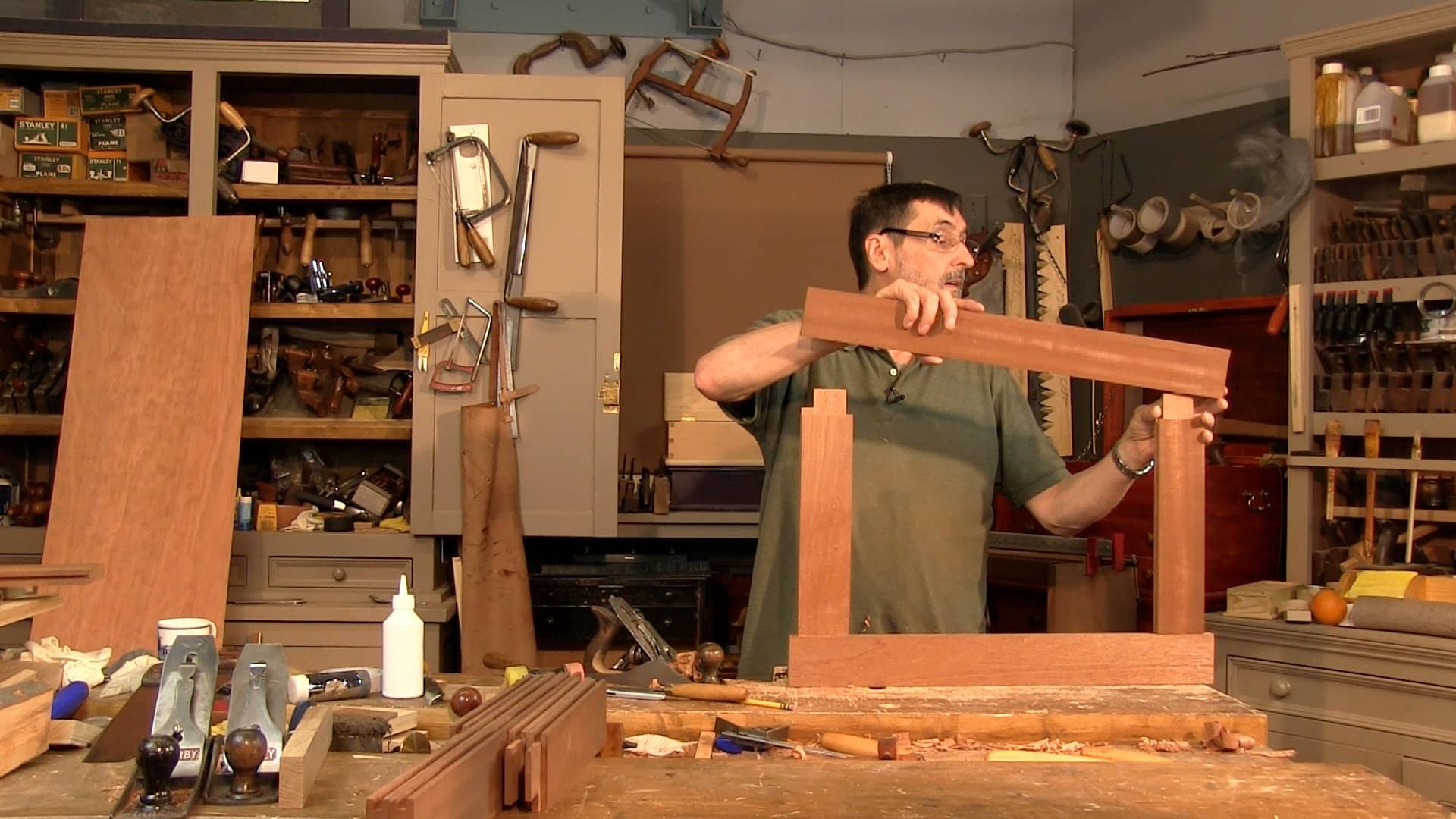Tool Chest: Episode 5
Posted 14 August 2013
This is an episode in a paid series. Want to watch it? You just need to sign up as a paid member, and you can enjoy this video and many other videos we think you will love.
In this episode Paul shows how to continue to make the frame for the bottom of the chest. He shows how to make the tenons and fit the frame together. This is the first time that we have shown how to make mortise and tenon frames on Woodworking Masterclasses.


Great job guys, thanks for this one 😉
I greatly appreciate the ton of details fitting the tenons into mortises to create a perfect, squared and untwisted panel.
Thanks for your teaching
–Óscar
Very helpful to watch you work through fitting the tenons to get them perfect. Her is a newbie question: Why have a haunch instead of just cutting a narrower tenon? Thank you.
Pete
Hello Pete, You’re gonna kick yourself here I think, but I did like your question and the way you presented it because it’s not going to be obvious to many watchers until they mess up and cut the haunch off altogther. Thanks.
When you run the groove and shorten the tenon shy of the end, cutting an all around tenon shoulder to the end results in a gap where the tenon ends. Because we must run a groove all the way through when we use a plough plane, we must inevitably leave a groove. The haunch then fills the groove and makes a good and practical conclusion. In all craft work we use a term that concludes difficult conclusions; we call this ‘resolved’. When something, an aspect of the work for instance seems inconclusive and we judge the work, we say it’s an unresolved piece or aspect of the work.
The haunch brings resolve to the tenon joint.
Thank you Paul.
Another great video Guy’s, I am learning so much from Paul. I do plan on making one of these tool boxes soon which will be out of pine as this is what is available to me. Not my choice wood but I am starting to like it more and more. Paul makes all this look so easy, I have tried splitting tenons but must have gotten heavy fisted as I made a mess out of it, will try again.
Thanks all who is involved.
Steve
Pine is a great wood and especially for tool boxes. Oak is what too heavy and makes the box cumbersome and so too mahogany, but they do look beautiful as a tool box so on we go. Make a pine one now to practice on. You’ll need another soon as the tools multiply.
Paul,
I imagined myself standing beside you, I the apprentice and you the master. At a point in this segment I would say, “This is good enough. What is a little gap?” Then, you kept analyzing, working, fitting, exhibiting the patience for which you are known. Then, I would say, “This is good enough already. What is a little gap?” Then you kept working, showing more patience. You finally achieved your goal of a perfectly fitted joint, and smile of satisfaction came to your face. Then, my impatient self said to myself, “You see, you humble apprentice, why he is the master and you are the apprentice?”
Thank you Paul.
Learned a lot with the joint fitting shown here. The stop tenon alignment jig is brilliant! Thanks so much for sharing these tips.
I’m making one now out of timber from a demolished gym floor while I wait out the coronavirus. The wood is mainly “Tasmanian Oak” which is just a marketing name for any one of messmate, wollybutt or mountain ash; all types of eucalyptus. Not as big as Paul’s however since it will never leave my workshop and would be too heavy for me to manage at my age anyway. Lots of fun.